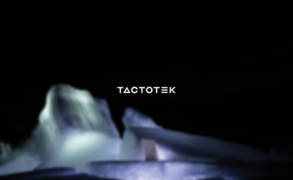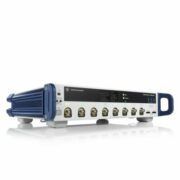The fight against viruses has been a long one. Chemical disinfectants only offer limited benefits against micro-organisms such as viruses and bacteria, as they can become resistant. UV light is a much more effective method for disinfecting and sterilizing water, air and surfaces, which makes it a more effective method against coronavirus.
In order to disinfect the protective clothing of the medical staff at the Huoshenshan Hospital in Wuhan, China so as to prevent the SARS-CoV-2 virus from spreading outside of the clinic, a disinfection tent with UVC LEDs was set up as a novel approach. In the 1.5m × 0.75m × 2m room with layered synthetic fabric walls, UVC emitters from American supplier Bolb are fitted to the reflective surfaces of the ceiling, walls and flooring. During the 30-second disinfection process, the UVC LEDs provide a dosage of 6 mJ/cm2 with a consistent brightness of 200 μW/cm2. The light wavelength of 265 to 280nm destroys genetic information, ensuring that the virus can no longer spread or infect other cells.
Artificial UV Sources
For a long time, ultraviolet light was generated using mercury-based radiation sources, for example using low and medium-pressure mercury vapor (Hg) lamps that generate UV light in a spectrum of 185 to 405nm by means of gas discharges. UV light can also be generated using UV cold cathode tubes (UV-CCL or UV lamps) in a spectrum of between 185 and 405nm by means of glow discharge.
UV LEDs emit UV rays in a spectrum of between 227 and 405nm by means of electroluminescence. The wavelengths are particularly short when using UVC LEDs-between 260 and 270nm-which provides the greatest sterilization effect. Figure 1 shows this using the example of cryptosporidium, a parasite that spreads in particular through unpurified drinking water. Other pathogens, bacteria and viruses exhibit very similar characteristics.
LEDs also offer a compellingly stable spectral output under specific temperature conditions and an almost limitless number of switching cycles, which makes them ideal for mobile solutions that need to provide full light output without any delay.
A Multitude of Weapons
UV rays are invisible to the human eye throughout their entire wave range of 100 to 400nm. Their frequencies are divided into UVA, UVB and UVC bands, and these have different effects on living organisms.
LEDs allow us to pretty much choose the wavelength at our discretion. UVA LEDs with a wavelength of 315 to 400nm offer greater penetration in dispersed biological tissue such as human skin compared to UVB and UVC rays. UVA LEDs are used in fields such as dentistry and cosmetics, for example in tanning studios and nail studios. In the industrial sector, UVA LEDs are used to cure resins, adhesives and paints.
With a wavelength of 280 to 315nm, UVB LED rays have comparatively little penetrating power when it comes to dispersed biological tissue, but they are subject to more scatter. UVB rays encourage the formation of vitamin D in the human body, which is why UVB LEDs are mainly used in medicine for phototherapy and dermatological treatments.
No Defense Against UVC Rays
The high-energy light from UVC LEDs is subject to ever more scatter in biological tissue. With a wavelength of 100 to 280nm, these rays do not penetrate tissue especially deeply, but they can burn unprotected skin. Because the ozone layer in Earth’s atmosphere absorbs the natural UVC radiation of sunlight, no earthly organism has developed defense mechanisms against UVC rays, and this is also true of viruses and bacteria. This vulnerability makes irradiation with artificial UVC light an especially effective method of sterilization and disinfection.
Company: Rutronik










